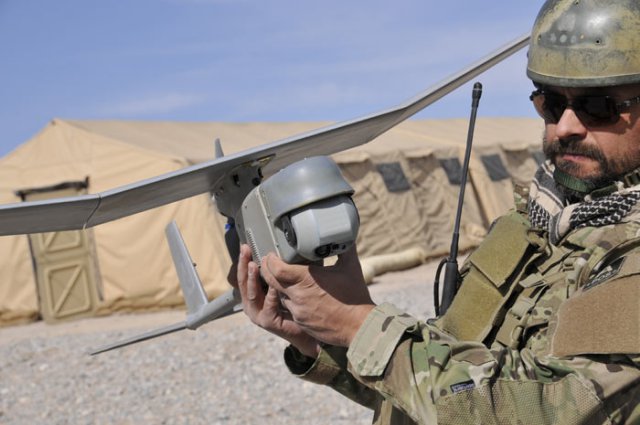 An anonymous Yemeni defence official, who was not authorized to speak with the press, tells Aviation Week that Yemen is receiving four AeroVironment RQ-11 Raven UAS.
An anonymous Yemeni defence official, who was not authorized to speak with the press, tells Aviation Week that Yemen is receiving four AeroVironment RQ-11 Raven UAS.
The 1.9-kg Raven is equipped with sensors for target acquisition, and infrared cameras capable of displaying persons carrying weapons.
“This type of technology would be very appropriate for Yemen’s frontline military units because it provides real-time intelligence from the battlefield to launch strikes while minimizing troops’ exposure to surprise attacks,” according to Aysh Awas, director of security and strategic studies at Sheba, a think tank here in the Yemeni capital.
The equipment marks a significant change in U.S. military cooperation with Yemen, which was suspended until earlier this year. Moreover, the U.S. Defense Department traditionally has kept a close hold on any UAS technologies, exporting them almost exclusively to close Western allies.
Last year, the U.S. provided 85 Ravens to Islamabad, Pakistan, another critical — albeit questionable — ally in the ongoing war against Al-Qaeda. Like Pakistan, however, many questions remain over the future of U.S.-Yemeni relations following the country’s tumultuous Arab Spring-inspired uprisings last year, which unseated 33-year President Ali Abdullah Saleh and transferred power to his deputy, Major Field Marshall Abd Rabu Mansur Hadi.
Victories aside, Awas claims Yemen’s elite, U.S.-funded and trained Counter Terrorism Unit (CTU) lacks vital support from the Yemeni air force (YAF). “Put simply, the fight against Al Qaeda in Yemen is a guerrilla war, and winning such wars requires special weapons and military equipment, including helicopters and transport aircrafts,” he says.
“Yemen’s air force does not have these weapons in required numbers to meet the needs of its 120 CTU operatives,” he adds. Indeed, YAF’s Cold War-era fleet comprises around 375 aircraft, of which only about 60% are operational due to years of neglect and mismanagement, according to a 2011 study by the Abaad Strategic Studies and Research Center here.
However, Washington has been attempting to develop air support for the CTU since 2006 under so-called Section 1206 authority, named after that part of the 2006 defense authorization act which allows training and equipping of foreign militaries for counterterrorism operations. The Pentagon so far has spent more than $300 million of these funds on the YAF, CTU and Yemeni Special Operations Forces, making the impoverished country the largest overall recipient of Section 1206 funding to date.
A major spike in Section 1206 spending came in fiscal 2010 in reaction to the failed 2009 Christmas Day bombing of a Detroit-bound airliner. The bulk of the funds went to purchase four Huey II (UH-1H) helicopters and a CN-235-300M medium-range twin-turboprop transport aircraft.
Source: Aviation Week
